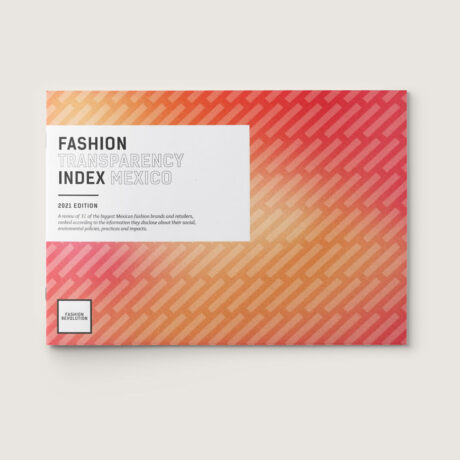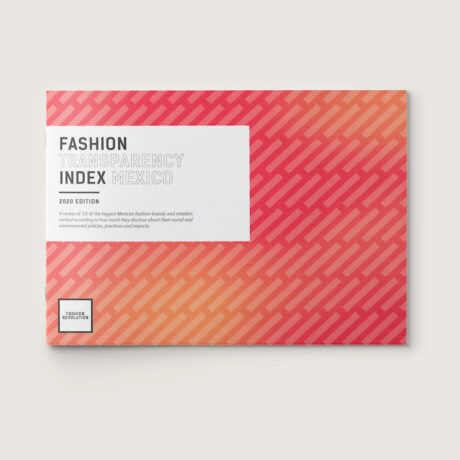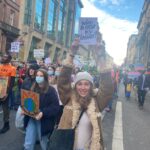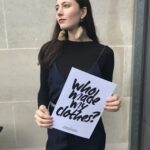Fashion Transparency Index 2021
The Fashion Transparency Index 2021
This is the sixth annual edition of the Fashion Transparency Index. This year, 250 of the world’s largest fashion brands and retailers were reviewed and ranked according to what information they disclose about their social and environmental policies, practices and impacts, in their operations and supply chain.
The Index is a tool to push and incentivise the world’s largest fashion brands to be more transparent about their social and environmental efforts. Fashion Revolution believes that transparency is foundational to achieving systemic change in the global fashion industry, which is why we have been campaigning for it since 2014, and why we created this Index.
Transparency is not to be confused with sustainability. However, without transparency, achieving a sustainable, accountable, and fair fashion industry will be impossible.
Transparency underpins transformative change but unfortunately much of the fashion value chain remains opaque, while human and environmental exploitation thrives with impunity.
A lack of transparency perpetuates an exclusive system, where people are expected to trust brands who have continued to put profit and growth above all else. When brands publicly disclose information, it allows anyone to scrutinise their policies, hold them accountable for their claims and advocate for positive change.
Transparency is a first step; it is not radical, but it is necessary.
Full report best viewed on laptop/desktop screen. Download a mobile friendly executive summary, here.
DOWNLOAD THE FASHION TRANSPARENCY INDEX 2021WHY TRANSPARENCY MATTERS
A lack of transparency costs lives. When the Rana Plaza building collapsed eight years ago, killing and injuring thousands of garment workers, rescuers had to dig through the rubble looking for clothing labels in order to figure out which brands were producing clothes there. It is impossible for companies to make sure human rights are safeguarded, working conditions are safe and the environment is protected without knowing where their products are being made.
But eight years after Rana Plaza, there is still much to be done. The global fashion industry remains rife with human rights abuses and environmental degradation. Supply chains remain complex, fragmented, deregulated and opaque.
A lack of visibility of supply chains can allow exploitative, unsafe working conditions and environmental damage to thrive while obscuring who has the responsibility and power to redress these issues.
Increased transparency enables workers’ rights and environmental advocates to identify, report and redress suspected abuses and helps brands and retailers to better track and manage social, environmental and governance risks that may affect their business.
Q&As
The Fashion Transparency Index analyses and ranks 250 of the world’s biggest fashion brands and retailers based on their public disclosure of human rights and environmental policies, practices and impacts, in their operations and in their supply chains.
The Fashion Transparency Index comprises 239 indicators covering a wide range of social and environmental topics such as animal welfare, biodiversity, chemicals, climate, due diligence, forced labour, freedom of association, gender equality, living wages, purchasing practices, supplier disclosure, waste and recycling, working conditions and more.
The Fashion Transparency Index was created to:
- Compare the level of transparency among the world’s largest fashion brands and retailers;
- Incentivise major brands and retailers to disclose a greater level of credible, comparable, detailed information year-on-year by leveraging their competitive tendencies;
- Analyse trends in transparency across the global fashion industry;
- Create a tool that people can use in their activism – whether at NGO or consumer level, and to shape Fashion Revolution’s ongoing campaigning efforts
Ultimately, the aim of the Index is not just transparency in and of itself. The aim is for this information to be used by individuals, activists, experts, worker representatives, environmental groups, policymakers, investors and even brands themselves to scrutinise what big fashion brands are doing, hold them to account and work to make change a reality.
The Fashion Transparency Index is one tool that Fashion Revolution has developed to help bring about systemic change in the industry. We also drive positive change through wider public awareness raising and education, lobbying governments, championing small and responsible designers, and building a network of activists around the world around a common vision.We are not alone in calling for transparency. We are one voice of many spanning across civil society, including NGOs and trade unions representing supply chain workers. Please read this letter published in April 2021 and signed by 33 NGOs, including Fashion Revolution, calling for full supply chain transparency in the clothing sector.
Transparency is the public disclosure of information that enables people to hold decision makers to account. For the fashion industry, it means sharing information about supply chains, business practices and the impacts of these practices on workers, communities and the environment. Transparency is crucial for connecting the dots of the problems in the fashion industry and understanding how to fix them.
Transparency is vital for holding major brands accountable for their human rights and environmental impacts across their supply chains.
We understand that citizens are seeking rankings of the ethics and sustainability of major fashion brands. This is not what the Fashion Transparency Index is designed to do.
The Index looks at how much information major brands and retailers share about their social and environmental efforts because transparency is a necessary first step for holding them to account for their impacts
Transparency underpins sustainability – without transparency, achieving a sustainable, accountable and fair fashion industry will be almost impossible.
See how transparency has been instrumental in driving social and environmental impact in the case studies (pages 24-25) and expert viewpoints throughout the report.
Being ranked highly in the Index means a major brand is comparatively more transparent than other big brands. We are not making any statement about whether a brand is ethical or sustainable.
The Fashion Transparency Index is not a shopping guide – it is a tool to push for more transparency from major brands and to inform people’s activism.
The Fashion Transparency Index reviews brands’ public disclosure on human rights and environmental issues across 239 indicators in 5 key areas:
- Policies & Commitments
- Governance
- Supply Chain Traceability
- Know, Show & Fix
- Spotlight Issues, which this year are:
- Decent work, covering Covid-19 response, living wages, purchasing practises, unionisation and collective bargaining
- Gender and racial equality
- Sustainable sourcing and materials
- Overconsumption and business models
- Waste and circularity
- Water and chemicals
- Climate change and biodiversity
Brands receive points for information that has been publicly disclosed on the brand or parent company website, through self-published annual reports and via third parties where there is a link between the company’s website and the third-party disclosure.
Each year we update the methodology in consultation with more than 20 pro-bono industry experts, including workers’ rights and environmental groups, trade union representatives, academics and investors.
This year, we have updated our methodology by reducing the weighting of points in Section 1 on Policies and Commitments and giving more weight to indicators which focus on the implementation of these policies. We acknowledge that policies do not always accurately reflect how a business is run, which is why this year we wanted to put greater emphasis on the results of brands’ efforts.
We have also looked at more topics and increased the weighting of the points in Section 5: Spotlight Issues, putting greater emphasis on disclosure of outcomes, results and impacts.
The Index format makes it easier to compare what major brands and retailers publicly disclose across a set list of social and environmental issues that we track year-on-year. It also enables major brands to see how they compare to their peers and competitors.
Ranking brands is a highly effective tool in incentivising transparency and pushes them to progressively improve public disclosure of social and environmental information.
Our ambition is that the Index will help governments see the need for stronger legislation on human rights and environmental impacts in the fashion industry, including mandatory public reporting.
The Fashion Transparency Index reviews and ranks 250 of the world’s largest and most influential fashion brands and retailers. Brands have been selected on the following basis:
- Annual turnover over USD $400 million
- Representing a spread of market segments including high street, luxury, sportswear, accessories, footwear and denim from across Europe, North America, South America, Asia and Africa.
As the biggest and most powerful consumer brands in the apparel industry, the brands reviewed in this Index have the most significant negative human rights and environmental impacts and the greatest responsibility to change. Where brands are privately held, we have made an educated guess regarding their size and turnover. Geographic spread is considered too.
No, brands and retailers don’t pay and cannot choose to be included in the Fashion Transparency Index.
We decide which major fashion brands and retailers are reviewed based on their annual turnover, aiming to target the world’s largest companies. We review brands whether or not they participate in the process by completing our questionnaire (which you can access here) and they are given points based entirely on information that is publicly available.
We want to achieve industry-wide change through engaging major brands and retailers in the industry, not charge them to participate.
Fashion Revolution treats all major brands in the Index exactly the same, which you can read more about in the disclaimers on page 107 of the full report here.You find out more about how Fashion Revolution is funded by visiting our about page and reading our Ethical Funding Policy which outlines the principles that underpin from whom Fashion Revolution will accept funding from.
We review the world’s largest and most profitable brands and retailers because they have the largest negative impacts on people and the planet, and therefore have the moral imperative, as well as resources, to take action.
Fashion Revolution showcases and champions smaller and more responsible brands and designers through our Fashion Open Studio initiative. These pioneering brands and designers are actively working to find solutions to the key social and environmental challenges facing the industry, from tackling studio waste to responsible production and sourcing, to finding ways to integrate their businesses with social enterprise initiatives for a mindful, more purposeful industry. The criteria for how Fashion Open Studio selects brands and designers for the programme can be found here.
While we do not include small independent brands in the Index, our research and methodology is free and open-source for other organisations to access and utilise.
No brand in the Index scores 100%. In fact, currently the highest brand score this year is OVS at 78% – the only brand out of 250 falling in the 71-80% range and the average score across all brands is just 23%.
However, in theory, a score of 100% would mean that a brand is publicly disclosing details of every supplier in their supply chain and every policy, procedure, performance and impact reviewed in the Index across a broad range of human rights, environmental and governance issues.
A score of 100% is not the ‘end’, but rather a great starting point for accountability, addressing impact, mitigating human rights and environmental risks and driving change for the better.
Real transparency, and a score of 100%, would also enable civil society organisations and experts, including the trade unions that represent garment workers, to scrutinise the disclosed information. Where necessary, they could call out shortcomings or malpractice and track to see if these are addressed.
A score of 100% would free civil society organisations from the lengthy process of ‘proving’ responsibility and chains of custody and allow them to focus on driving impact by holding the brand accountable for addressing and mitigating issues and risks.
Commitment to transparency is commitment to an ongoing process of continuous improvement. It is not a tick-box exercise. Even a brand scoring 100% would not be ‘done’; they would need to maintain up-to-date disclosure on evolving issues. The human rights and environmental risks in fashion are in constant flux – and so to maintain transparency, disclosure would need to be continuously updated too.
We recognise that a high score in the Index can lead to confusion amongst consumers that this relates to the sustainable or ethical credentials of a brand. But we want to be very clear – this is not what the Index is measuring. The Index does not measure ethics or sustainability; it measures public disclosure of information that people can use to hold big influential brands to account for their claims.
Fashion Revolution believes that the pursuit of endless growth is in itself unsustainable and the model which big multinational brands and retailers included in this Index rely upon. Greater transparency shines a light on the impacts of this fundamental problem.
This year, we have also issued Communications Guidelines to brands reviewed, which can be read here, to ensure that brands communicate their results accurately, avoiding confusion and greenwashing.
The research is based entirely on information which is in the public domain that has been published by major fashion brands and retailers, which often goes through their legal departments and sometimes goes through third party assurance processes.
However, it is beyond the scope of this research to verify information published in the public domain by major brands and retailers. Verification of brands’ claims can only be done by affected stakeholders and experts on-the-ground in the places where brands are sourcing.
We actively encourage publicly disclosed information to be scrutinised by anyone and everyone and used to hold brands to account. And, we will continue pushing big brands to put more information in the public domain.
The Index has driven positive change by influencing big brands and retailers to disclose more information about their policies, practices and impacts, in their own operations and in their supply chains.
When Fashion Revolution published the first Index in 2016, only 5 out of 40 major brands disclosed their suppliers and now six years later 117 out of 250 major brands disclose their suppliers.
Supply chain transparency is crucial for finding problems and fixing them and to see that this disclosure has increased year-on-year since 2016 is an indication that the Index has been influential.
Because more big brands have published their supplier lists in the past few years, several instances of human rights abuses in brands’ supply chains have been flagged and resolved. See a selection of case studies on pages 24 and 25 in the full report on how worker advocates have been using transparent disclosure to address abuses and hold brands to account.
For brands that have been reviewed year-on-year since 2017, we have seen their average scores on transparency progressively increase.
We have also forged partnerships with several other organisations, including Wikirate.org and FashionChecker.org, to enable the Index methodology and research to be used by workers’ rights advocates to call upon major brands to address abuses in their supply chains.
Anyone anywhere should be able to find out how, where, by whom and at what social and environmental costs their clothes are made. This requires greater transparency across fashion’s global value chain.
So, our call to you is this – do not use this Index to inform your shopping choices but rather use these findings to inform your activism.
We urge readers to use these findings to speak up and challenge the big profitable brands and retailers on their claims, urging them to be more accountable and prove that they’re making changes in reality and not just on paper.
For individuals, this means calling on:
- Major brands and retailers to be more transparent on all the issues included in the Fashion Transparency Index – get in touch with brands and ask them #WhoMadeMyClothes? #WhatsInMyClothes? And #WhoMadeMyFabric?
- Policymakers to create legislation that holds big brands accountable for human rights and environmental impacts the length of the value chain
- Shareholders and investors to use their power to influence big brands to be more transparent and do better for the planet and the people who make our clothes
- Civil society, such as trade unions and NGOs, to ensure that brands’ policies and practices translate into positive outcomes in the places where clothes are made
To read more about what you can do with these findings – whether you’re an individual, brand or retailer, policymaker, investor, NGO or trade union – please see pages 100-103 in the 2021 Index.
2021 KEY FINDINGS
Progress on transparency in the global fashion industry is still too slow among 250 of the world’s largest fashion brands and retailers, with brands achieving an overall average score of just 23% in the Fashion Transparency Index 2021.
This year’s Fashion Transparency Index reveals a lack of transparency in several crucial areas. A highlight of key findings includes:
Living wages
- The majority of major fashion brands (99%) do not disclose the number of workers in their supply chain that are being paid a living wage.
- 96% do not publish a roadmap on how they plan to achieve a living wage for all workers in their supply chain.
Covid-19 response
- Just 3%, are publicly disclosing the number of workers in their supply chains laid-off due to COVID-19, leaving us with an ‘incomplete picture’ of the negative socio-economic impact workers have faced throughout the pandemic.
- Less than a fifth (18%) of major brands disclose the percentage of their complete or partial order cancellations, making it difficult to assess the full impact of the pandemic across fashion supply chains.
Purchasing practices:
- Fewer than 10% of brands publish a policy to pay suppliers within 60 days, meaning that clothes are often worn by consumers before brands have paid the factories that made them.
Addressing the climate crisis
- Only 14% of major brands disclose the overall quantity of products made annually, making it difficult to understand the scale of overproduction globally.
- Most carbon emissions occur at processing and raw material levels and while 62% of big brands publish their carbon footprint in their own facilities, only 26% disclose this information at processing and manufacturing level and only 17% do so at raw material level.
- More than one third of big brands (36%) have published their progress towards reducing the use of virgin plastics for packaging, but only 18% do so for textiles deriving from virgin fossil fuels, which consumers are less likely to recognise as plastic.
Supply chain traceability
- Over a quarter (27%) of major brands now disclose some of their processing facilities (e.g., spinning mills, dye-houses and laundries) – up from 24% last year.
- 11% of major brands publish some of the raw material suppliers (e.g. cotton, wool, viscose) – up from 7% last year.


TAKING ACTION ON THE FINDINGS
Anyone anywhere should be able to find out how, where, by whom and at what social and environmental costs their clothes are made. This requires greater transparency across fashion’s global value chain.
So, our call to you is this – do not use this Index to inform your shopping choices but rather use these findings to inform your activism.
We urge readers to use these findings to speak up and challenge the big profitable brands and retailers on their claims, urging them to be more accountable and prove that they’re making changes in reality and not just on paper.
Demand major brands and retailers be more transparent, get in touch and ask them #WhoMadeMyClothes? #WhatsInMyClothes? and #WhoMadeMyFabric?
TAKE ACTIONDOWNLOAD THE COMPLETE METHODOLOGY AND DATA SETS
Want to take an in-depth look into the Fashion Transparency Index? You can download the full dataset and methodology.
FURTHER READING
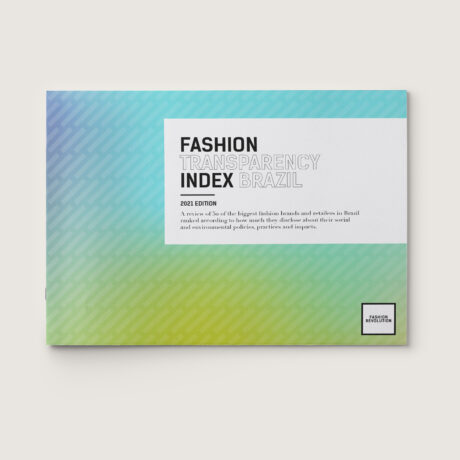
Fashion Transparency Index Brazil 2021
Ranking the levels of transparency of 40 of the biggest fashion companies in Brazil. Available in English and Portuguese.
DOWNLOAD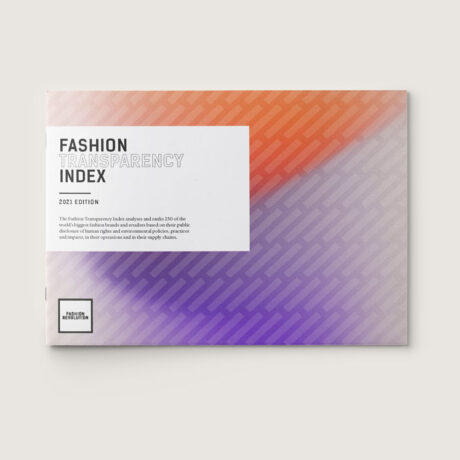
Fashion Transparency Index 2021
A review of the 250 biggest fashion brands and retailers ranked according to how much they disclose about their social and environmental policies, practices and impacts.
DOWNLOAD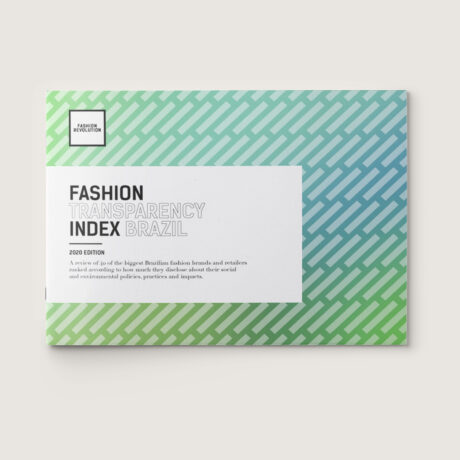
Fashion Transparency Index Brazil 2020
Ranking the levels of transparency of 40 of the biggest fashion companies in Brazil. Available in English and Portuguese.
DOWNLOAD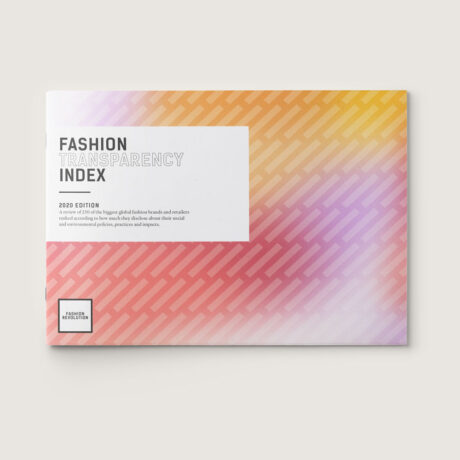
Fashion Transparency Index 2020
A review of the 250 biggest fashion brands and retailers ranked according to how much they disclose about their social and environmental policies, practices and impact.
DOWNLOAD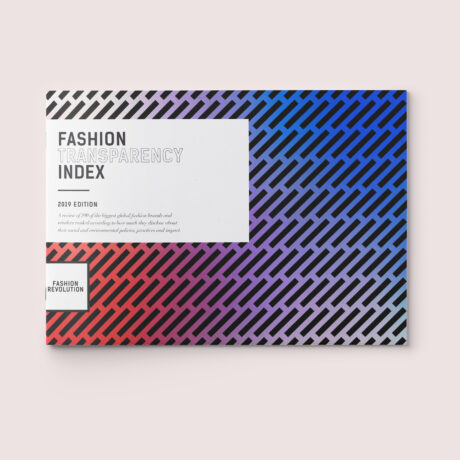
Fashion Transparency Index 2019
A review of the 200 biggest fashion brands and retailers ranked according to how much they disclose about their social and environmental policies, practices and impact.
DOWNLOAD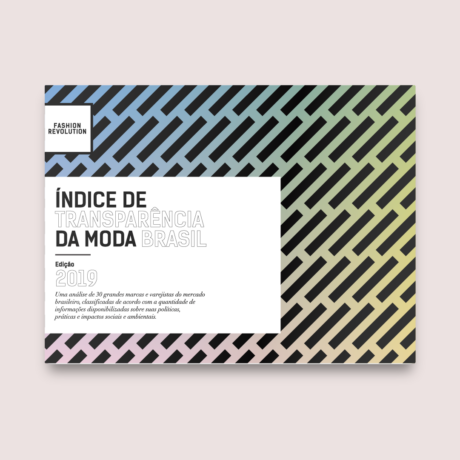
Fashion Transparency Index Brazil 2019
Ranking the levels of transparency of 30 of the biggest fashion companies in Brazil. Available in Portuguese and English.
DOWNLOAD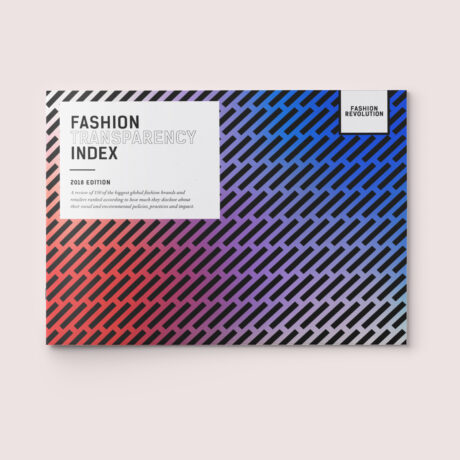
Fashion Transparency Index 2018
Ranking the levels of transparency of 150 of the biggest global fashion companies.
DOWNLOAD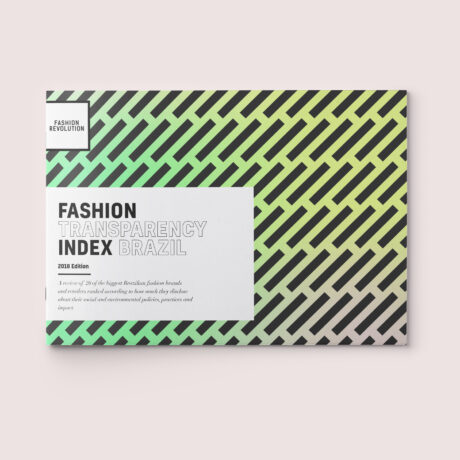
Fashion Transparency Index Brazil 2018
Ranking the levels of transparency of 20 of the biggest fashion companies in Brazil. Also available in Portuguese.
DOWNLOAD
Fashion Transparency Index 2017
Ranking the levels of transparency of 100 of the biggest global fashion companies. Also available in Spanish and Portuguese. Read the FAQs.
DownloadFashion Transparency Index Team 2021
Want to get in touch with the Policy and Research Team about the Fashion Transparency Index? Email us at Transparency@fashionrevolution.org
